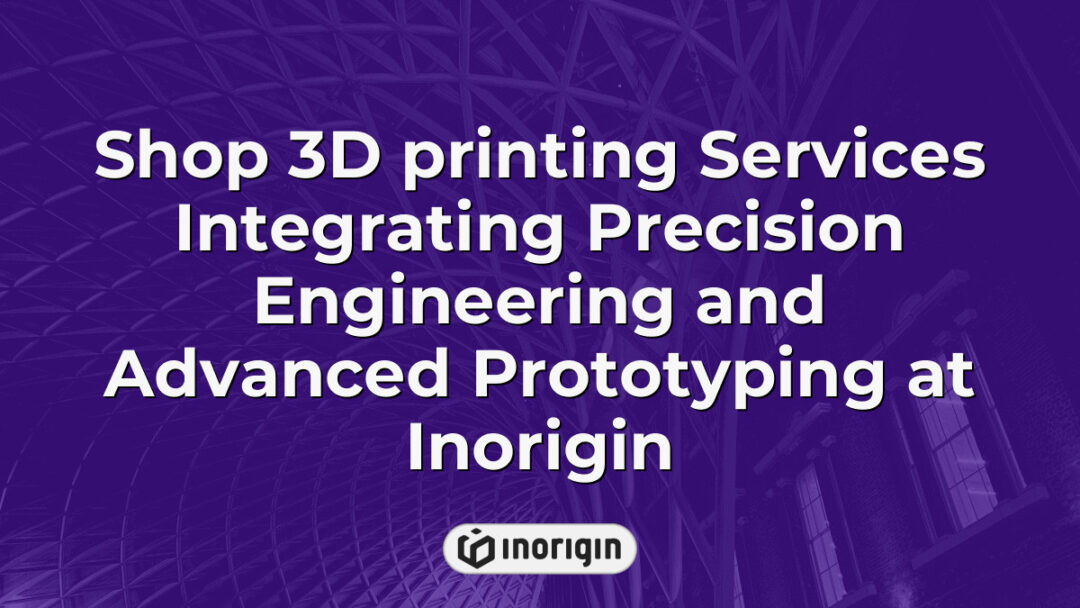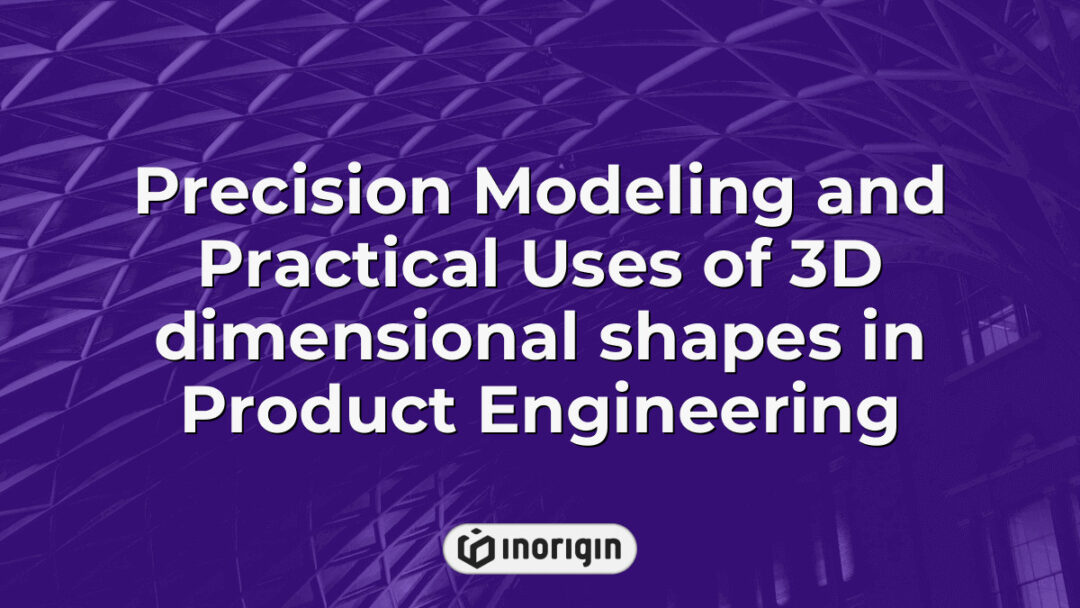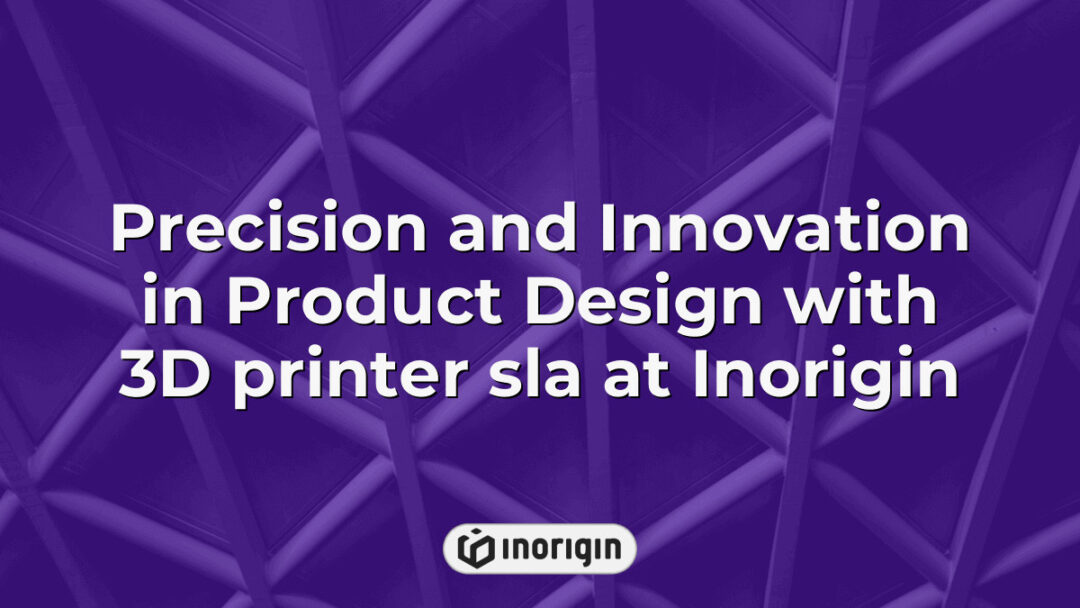In a world where one can effortlessly purchase everything from artisanal pickles to ethically sourced unicorn hair, why not indulge in the limitless possibilities of 3D printing? This revolutionary technology has transformed the realm of consumerism, allowing individuals to print custom objects as easily as ordering takeout—one would almost expect Amazon to start delivering filament with same-day service. However, beneath this whimsical facade lies a complex evolution of manufacturing that challenges conventional notions of production and ownership. The phenomenon known as "Shop 3D Printing" is not merely about acquiring goods; it represents a paradigm shift towards personalization and innovation that promises to redefine how society interacts with material culture in an increasingly digital age.
| Aspect | Key Takeaway |
|---|---|
| Shop 3D Printing Concept | Shop 3D printing revolutionizes consumer manufacturing by enabling personalized, on-demand creation of custom products, bridging innovation with user-driven design. |
| Technology Overview | 3D printing constructs objects layer-by-layer from digital models using materials like plastics and resins, delivering high precision and versatility for various applications. |
| Industry Applications and Market Growth | The expanding 3D printing market, projected to reach $34.8 billion by 2024, serves industries from bespoke consumer goods to aerospace, fostering innovation and customization. |
| Selecting Appropriate Equipment | Choosing the right 3D printer involves assessing material compatibility, printing technology such as FDM or DLP, and essential components to meet specific project requirements. |
| Maintenance and Optimal Performance | Regular upkeep of printer parts and using recommended accessories are crucial to maintain print quality and ensure reliability in professional 3D printing environments. |
| Environmental Impact | On-demand production with sustainable materials and waste reduction strategies contributes to minimizing the ecological footprint of 3D printing processes. |
| Cost Considerations | Understanding initial purchase, material expenses, and ongoing maintenance costs is essential for effective financial planning in 3D printing workflows. |
Overview Of 3D Printing Technology
3D printing technology, often heralded as a revolutionary advancement in manufacturing and design, encompasses a diverse array of processes that enable the creation of three-dimensional objects from digital files. Initially founded on layered additive methods, this innovative technique allows for the formation of intricate designs that traditional manufacturing methods struggle to replicate. Various materials, ranging from plastics to metals and even biological substances, can be employed in 3D printing, resulting in an expansive range of applications. The rise of online platforms further enhances accessibility to d printed design products, facilitating user engagement through customizable options tailored to individual needs. As industries embrace these transformative technologies, they unlock possibilities previously considered unattainable—ranging from bespoke consumer goods to complex aerospace components. Thus, while challenges such as material limitations and production speed remain pertinent issues within the realm of 3D printing, ongoing research continues to push boundaries towards broader implementation and innovation; ultimately reshaping both market dynamics and consumer expectations significantly.
Essential Equipment And Materials For 3D Printing
The realm of 3D printing can be likened to a modern-day alchemy, transforming digital concepts into tangible objects with remarkable precision and speed. Essential equipment for this innovative technology includes various types of 3D printers, each suited to specific applications ranging from rapid prototyping to intricate manufacturing. Among the spectrum of available devices, Fused Deposition Modeling (FDM) printers are predominant due to their accessibility and versatility; however, more advanced options like Stereolithography (SLA) or Selective Laser Sintering (SLS) offer enhanced capabilities for specialized tasks. The construction and functionality of these machines depend heavily on their respective parts—such as extruders, build plates, and motors—which significantly influence print quality and efficiency. Additionally, d printer accessories play a vital role in optimizing the process; items such as filament spools, cooling fans, and maintenance tools contribute not only to performance but also to user experience by ensuring reliability during operation. Collectively, these elements form an interconnected network that underpins successful 3D printing endeavors, underscoring the complexity inherent in this seemingly simple act of creation.
Popular Applications And Use Cases
The realm of 3D printing has expanded significantly, with a notable statistic indicating that the global market for 3D-printed products is projected to reach $34.8 billion by 2024. This rapid growth underscores the diverse applications and use cases emerging within various industries. One prominent application includes the production of custom jewellery, where designers leverage 3D printed design products to create intricate pieces tailored to individual preferences. Furthermore, businesses are increasingly adopting dropshipping methods in conjunction with these customised items, allowing them to offer unique offerings without holding inventory. As demand for personalised consumer goods rises, it becomes evident that innovations in 3D printing not only enhance product diversity but also streamline supply chains across multiple sectors.
Choosing The Right 3D Printer For Your Needs
Selecting an appropriate 3D printer necessitates a thorough understanding of various factors, including the intended application, budget constraints, and specific requirements for the associated components. Initially, it is imperative to analyze the types of materials that will be used in conjunction with different models of 3D printers, as this influences not only print quality but also durability and versatility. Moreover, consideration should be given to essential d printer parts such as extruders and hotends, which can significantly affect printing performance depending on their compatibility with filaments or resins being utilized. Additionally, incorporating suitable d printer accessories—such as heated beds or upgraded cooling systems—can enhance efficiency and output consistency during operation. Thus, evaluating these elements holistically enables informed decision-making tailored towards optimizing both functionality and investment in 3D printing technology.
Advanced Tips And Troubleshooting
As one navigates the intricate landscape of 3D printing, it becomes evident that mastery over this technology hinges not only on the selection of appropriate machines but also on a nuanced understanding of advanced tips and potential troubleshooting strategies. To begin with, knowledge of specific 3D printer parts, such as nozzles, extruders, and build plates, can significantly enhance print quality; thus, ensuring that these components are well-maintained is essential for optimal performance. Moreover, employing compatible d printer accessories—including filament types and adhesives—further facilitates achieving desired outcomes while minimizing common issues like warping or layer adhesion failure. Transitioning to more complex dilemmas, users may encounter challenges related to calibration or software settings; however, systematic approaches to resolving these concerns—such as utilizing online forums or manufacturer resources—can empower operators to adeptly troubleshoot their equipment. Through diligent attention to both hardware components and user-guided practices, individuals engaged in 3D printing can refine their techniques and achieve greater proficiency within this evolving field.
Frequently Asked Questions
What Are The Environmental Impacts Of 3D Printing?
The advent of 3D printing technology evokes comparisons to the Industrial Revolution, a transformative period that brought both innovation and environmental consequences. As this modern manufacturing process gains traction across various industries, it becomes imperative to scrutinize its ecological implications. Initially, one significant concern arises from the materials utilized in 3D printing processes; for instance, common thermoplastics such as polylactic acid (PLA) and acrylonitrile butadiene styrene (ABS) not only require substantial energy inputs for production but also pose challenges regarding their biodegradability and recycling potential. Furthermore, research indicates that emissions generated during the additive manufacturing process can contribute to indoor air quality issues, raising health concerns for operators working in confined environments. Additionally, while on-demand production offers the promise of reduced waste through minimized overproduction—contrasting sharply with traditional subtractive methods—it is essential to consider the complete lifecycle of products created via 3D printing. Ultimately, the balance between technological advancement and sustainability remains a complex narrative requiring ongoing investigation into more environmentally friendly materials and practices to mitigate adverse effects associated with this evolving field.
How Do Intellectual Property Laws Affect 3D Printing And Design Sharing?
The intersection of intellectual property laws and 3D printing serves as a fascinating realm where innovation and regulation paradoxically coexist. On one hand, the very essence of 3D printing lies in its potential for democratizing design, enabling individuals to create custom objects while significantly reducing production barriers; ironically, this same technology invites complexities regarding ownership rights that can stifle creativity. As designs are easily replicable, traditional copyright frameworks struggle to keep pace with technological advancements, leading to a burgeoning debate over how existing laws apply in the digital fabrication context. Moreover, issues surrounding patents become increasingly convoluted, particularly when considering multiple stakeholders who might claim proprietary rights over similar or derived creations. Transitioning from these challenges to practical implications reveals a landscape fraught with tension—designers fear infringements on their original works while consumers yearn for open access to innovative products. Therefore, the ongoing evolution of both technology and legal frameworks underscores an urgent need for clarity in intellectual property legislation if the full potential of 3D printing is to be realized without compromising individual rights or hindering communal advancement.
What Are The Safety Considerations When Operating A 3D Printer?
Operating a 3D printer can be likened to navigating a complex ecosystem, where various elements must harmonize to ensure safety and optimal performance. As users engage with this technology, several critical safety considerations emerge that warrant attention. Firstly, the materials employed in 3D printing often present health and environmental risks; consequently, it is imperative to understand both their properties and potential hazards. Moreover, proper ventilation must be ensured during printing processes to mitigate exposure to fumes or particulates generated by specific filaments. In addition to material safety, operational hazards arise from the mechanical components of 3D printers.
- Material Safety
- Toxicity: Some filament types release harmful emissions when heated.
- Flammability: Certain materials may pose fire risks if not handled properly.
Operational Hazards
- Moving Parts: Risks associated with hands near moving components during operation.
- Electrical Safety: Ensuring appropriate electrical setup to prevent shorts or fires.
Rounding out these considerations requires an awareness of best practices for machine maintenance alongside consistent adherence to outlined safety protocols. Awareness of the intricacies involved in both material selection and equipment operation greatly contributes to fostering a safer environment for individuals who utilize this innovative technology. Thus, ensuring comprehensive understanding and implementation of established safety measures is essential for mitigating risk within the realm of 3D printing operations.
How Can I Find Or Create 3D Models For Printing?
The quest for 3D models suitable for printing presents a significant aspect of the additive manufacturing process. According to recent studies, approximately 70% of individuals engaged in 3D printing utilize existing online repositories or platforms to locate their design files. This statistic underscores the importance of accessible resources within the community. Numerous websites and databases, such as Thingiverse, MyMiniFactory, and GrabCAD, offer vast collections of user-contributed designs that can be freely downloaded and printed. Additionally, many software tools enable users to modify existing models or create unique designs from scratch by utilizing computer-aided design (CAD) programs like Tinkercad or Fusion 360. Moreover, collaboration among designers through open-source initiatives has further enriched the pool of available models while fostering innovation within the field.
To enhance the model acquisition process, it is advisable to consider incorporating specific keywords related to desired characteristics when searching through online repositories. Using precise terms will yield more tailored results and facilitate efficient navigation through expansive datasets.
What Is The Cost Breakdown Associated With Owning And Operating A 3D Printer?
Owning and operating a 3D printer can be likened to maintaining a small manufacturing facility within one’s home, as it necessitates both an understanding of material costs and operational expenses. The cost breakdown associated with this technology encompasses several critical components that collectively determine the overall financial commitment required for successful operation. Firstly, initial investment in the printer itself presents a considerable outlay; however, one must also account for recurring expenditures related to materials and maintenance.
- Initial Costs:
- Purchase price of the 3D printer
- Optional upgrades or specialized hardware attachments
- Software licensing fees
Recurring Operating Expenses:
- Filament or resin costs (depending on the printing method)
- Types of filament (e.g., PLA, ABS, PETG)
- Cost variations based on quality and supplier
- Resin prices (if utilizing SLA/DLP printers)
Maintenance and Repair Fees:
- Replacement parts like print heads or build plates
- Routine servicing requirements, such as lubrication or calibration
- Unforeseen repairs due to mechanical failure
As these multifaceted elements indicate, owning a 3D printer involves more than just the purchase price; rather, it entails sustained financial responsibility throughout its lifecycle. Understanding these diverse cost implications enables individuals to make informed decisions regarding their investment in additive manufacturing technologies while effectively planning for potential additional expenditures that may arise over time.
Conclusion
The realm of 3D printing emerges as a vibrant tapestry woven with innovation and creativity. From intricate prototypes to bespoke designs, this technology carves pathways into diverse industries. As expected horizons expand, embracing 3D printing offers an opportunity for individuals and organizations alike to sculpt visions into tangible realities.
Related posts:
- How Product Safety Engineer Roles Drive Innovation and Regulatory Compliance
- Filament 3D Printer Advantages for Precision Engineering and Advanced Product Design
- Quality 3D printer filament near me for professional-grade printing projects
- Advanced 3D Print Filament Properties and Sustainable Options for Precision Prototyping
- 3D printing filament near me for precision prototyping and advanced product design in Patra
- Material Science and Performance Standards Shaping 3D Printer Filament Quality




